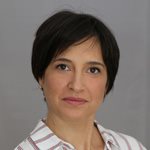הודג'קין
דיון מתוך פורום המטולוגיה
שלום, ברצוני לדעת מה הם האחוזים שמחלת הודג'קין תחזור שנית לאחר טיפול מלא בגיל 25. הכוונה היא לסטטיסטיקה. תודה
תלוי בסוג ההודג'קין וב- stage, בגורמי הסיכון שהיו בעת גילוי המחלה ובטיפול שניתן. http://www.remission.org/fahq/statistics.shtml http://www.lymphomainfo.net/hodgkins/description.html
תקציר של מאמר חדש בנושא ששאלת לגביו. רק דוגמה לשונות של התשובה בהתאם לסוג המחלה ולטיפול. Long-Term Follow-Up of a Prospective Study of Combined Modality Therapy for Stage III Indolent Non-Hodgkins Lymphoma John F. Seymour, Barbara Pro, Lillian M. Fuller, John T. Manning, Fredrick B. Hagemeister, Jorge Romaguera, Maria A. Rodriguez, Chul S. Ha, Terry L. Smith, Ana Ayala, Mark Hess, James D. Cox, Fernando Cabanillas, Peter McLaughlin From the Department of Haematology, The Peter MacCallum Cancer Institute, East Melbourne, Victoria, Australia; Departments of Lymphoma/Myeloma, Radiation Oncology, Hematopathology, and Biostatistics, The University of Texas, M.D. Anderson Cancer Center, Houston, TX. Purpose: Standard therapy for patients with stage III indolent lymphoma has been involved-field radiation therapy (IF-XRT), which achieves 10-year disease-free survival in 40% to 50% of patients, with many of these patients cured. We investigated the potential for combined-modality therapy to increase the disease-free survival for such patients. Patients and Methods: A total of 102 eligible patients with stage III low grade lymphoma (International Working Formulation criteria) were enrolled from 1984 to 1992. Treatment comprised 10 cycles of risk-adapted chemotherapy (cyclophosphamide, vincristine, prednisone, bleomycin [COP-Bleo], and with doxorubicin added for some [CHOP-Bleo]) and 30 to 40 Gy IF-XRT. Results: The patients median age was 56 years (range, 28 to 77), with follicular histology in 83%, bulky disease ( 5 cm) in 24%, and stage II in 52%. There were no treatment-related deaths and 99% of patients attained complete remission. With a median follow-up of 10 years, the 10-year time to treatment failure and overall survival were 76% and 82%, respectively. For patients with follicular lymphoma, these figures were 72% and 80%, respectively. The only factor associated with treatment failure, for follicular lymphoma patients, was stage-modified International Prognostic Factors Index score (P = .02). None of 17 patients with diffuse small lymphocytic or mucosa-associated lymphoid tissue histology have relapsed. Elevated serum beta2-microglobulin was associated with shorter survival (P < .0001). The 10-year survival after relapse was 46%. There have been two cases of myelodysplasia and 12 other new malignancies, including four arising within radiation fields. Conclusion: With prolonged follow-up, combined-modality therapy with risk-adapted COP-/CHOP-Bleo and IF radiation has attained higher rates of disease control and survival than previously reported with IF-XRT alone. This apparent improvement is being further explored in an ongoing randomized trial.

